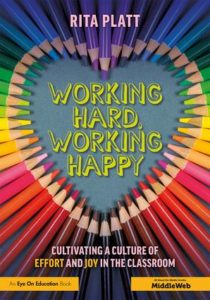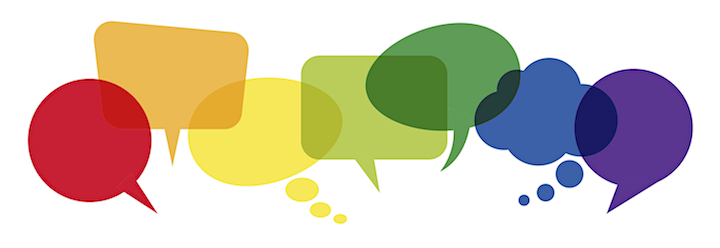Quick Surveys Can Help Us Teach and Lead
A MiddleWeb Blog

Surveys are simple to make, easy to administer, and can offer tons of useful information that you can use to make your classroom or school even more effective than they already are.
For the purposes of this post, we’ll define surveys as tools used to help us understand others’ perspectives on issues that impact teaching and learning.
It’s the kind of feedback that we sometimes need the most, but often don’t make the time or effort to gather.
I use surveys to find out all kinds of things. Here are four ways I use them every year. Under each type I’ve included several sample questions.
1. SUCCESS: To learn what students/teachers feel they need to be more successful, I ask them to self-assess, reflect, and share ideas for future lessons/inservices.
- What are your goals this year?
- What subject areas/strategies are you doing well with?
- What do you hope to learn more about?
- How are you doing with _______________?
2. CLIMATE: To get an idea of the climate in a classroom, the community, or the whole school. I ask students, teachers, and families what they see as going well and what ideas they may have for positive changes.
- Rate your feelings about how things are going in the lunchroom.
- What do you think is the top priority for our work together this year?
- How do you feel the school is handling bullying?
- What suggestions do you have for improving the school?
3. PERSONAL LIVES: To learn about the people I serve as a principal and teacher. I want to know about them as people beyond the day-to-day interactions we have.
- What is your all-time favorite song?
- If you could be anything other than a teacher, what would you be?
- What is your favorite coffee flavor?
- How many kids do you have? Do you have grandchildren?
4. MY EFFECTIVENESS: I need this to help assess my own efficacy. As a servant leader, I want to know how others view me and the work I do. I ask them to offer me constructive feedback to help me better meet their needs.
- If you had to give me a grade on how I’m doing, what would the grade be?
- What are two or three things you would love for me to do more or less of?
- What help do you need in the classroom that I could give you?
For the “give me a grade” question, I generally list several key areas of my job as principal; for example, professional development, student discipline, working with parents, etc. Teachers might do the same, asking students about key aspects of a teacher’s classroom role.
Who to Survey
In the course of a typical year I use surveys to reach different stakeholders. So far this year I have surveyed families about their access to technology, students about their lives as readers, paraprofessionals about their perspective on how the year is going, and teachers about their wants, needs, and goals.
Not only do the results provide me with helpful information, but just the act of asking folks to share their thoughts, feelings, and ideas helps build our strong collaborative culture. Really, from a leadership perspective, the lasting positive effects to school climate is the most important reason to do surveys.
Tools to Use
Even if slightly challenging at first, once you start creating surveys it becomes super easy! I can make a survey in a matter of a couple of minutes. Online, Survey Monkey and Google Forms are both very easy to use and free. If you’re in your building, a good old-fashioned paper and pencil survey works well too. There are even a great number of pre-made surveys free on the internet that you might find helpful.
Easy to follow video tutorials:
Printable surveys:
Scholastic Student Interest Survey
Simple Paper and Pencil Surveys

3, 2, 1 Reflections are great too. To use them, have participants respond to three prompts. For example: List three things you like about class. List two things you have done in class that make you proud. List one thing you would change about the class or your work in it.
Using the Results
Whatever survey you use, the key is to make use of the survey results in visible ways, so stakeholders realize that you value the time and effort they put into providing feedback. Check out the examples below.
✔︎ One year I surveyed students on what they liked and didn’t like about our language arts class. Over and over again students wrote that they liked the course but did not like how I asked them to keep track of the vocabulary they were learning. I took that feedback to heart and shared it freely with my students. Together we brainstormed several possibilities for keeping track of vocabulary that met learning targets, my rigorous expectations, and students’ needs for autonomy and choice. Win-win-win!
✔︎ This year, I surveyed teachers about what professional goals they have for the year. I made a cheat sheet to remind me of their goals and used the sheet to help me focus on my observations on their chosen goals. I also use the survey information to help me find meaningful ways to serve the teachers. For example, several teachers had goals of learning effective distance teaching techniques. I found webinars and books for them and an online conference for the music specialist.
✔︎ A recent survey of paraprofessionals’ thoughts about student behavior at lunch and at recess led to minor changes in procedure that will keep the school safer because they increased social distancing.
The Bottom Line
Using surveys is a quick but powerful to way to make you a better teacher and leader as well as to make your school and/or classroom a better place to spend time and learn.




































